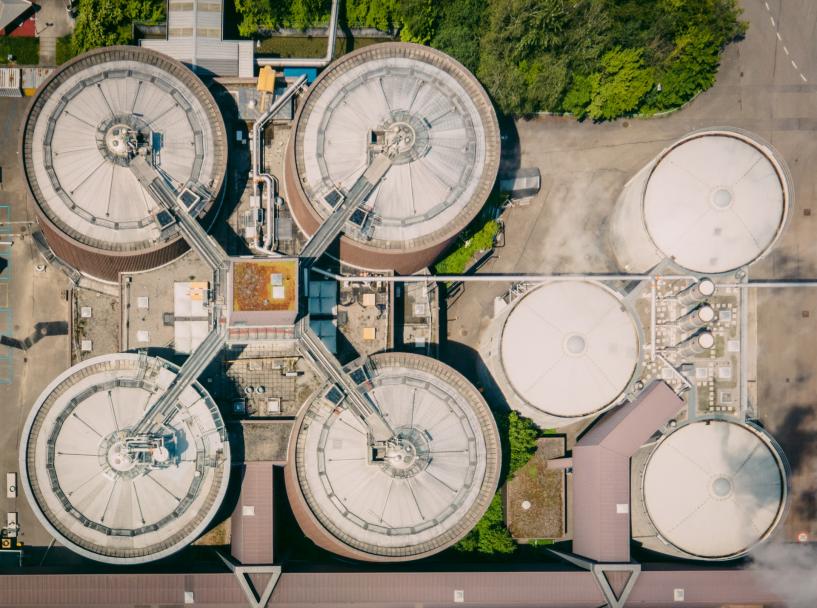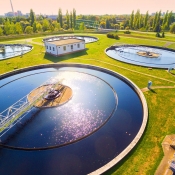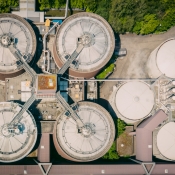Sewage Treatment Plant

What Are Sewage Treatment Plants, and How Do They Work?
Essentially, a sewage treatment plant operates by circulating air to encourage the growth of bacteria to break down sewage. The goal is to deliver much cleaner, more environmentally friendly effluent. It involves a similar process to a typical septic tank but has some key differences. Sewage treatment plants, depending on their size, can treat the waste of commercial properties or a number of domestic dwellings.
What Are The Stages of Sewage Treatment?
The general construction of a sewage treatment plant doesn’t differ too drastically from that of a septic tank. Just as with a septic tank, sewage flows from the property being serviced into the first chamber of the sewage treatment plant. Here, the water sits until grease, oil and scum have floated to the top and solids have settled on the bottom of the tank.
Once the process of separation has taken place, the liquid travels into a second chamber which is where sewage treatment plants differ from septic tanks. This chamber is fitted with an air pump that circulates air around the chamber to encourage the growth of aerobic bacteria. This bacteria helps to break down the contaminants in the water, effectively cleaning it.
The final stage of a sewage treatment plant is one last settlement tank. This final tank allows the very last solids that may remain to sink to the bottom of the tank before the effluent is discharged into a soakaway or watercourse.
Once the treatment process has been completed and the wastewater has been treated as thoroughly as possible, it can be discharged into the environment. This is another key area where sewage treatment plants differ from sewage treatment plants. Whereas you must discharge effluent from a septic tank into a soakaway for further treatment in the ground, subject to an Environment Agency Consent to Discharge, you can discharge your effluent into local water sources straight from your treatment plant. This is because of the vastly improved effluent quality that the treatment process produces.
Why Are Sewage Treatment Plants Required?
The first thought for anyone planning a new development should be getting connected to mains sewers. They are typically the most cost-effective and reliable method of dealing with your wastewater. However, getting a mains sewer connection isn’t always possible. In some scenarios, the distance from the nearest sewer or the layout of the land can make it impossible to have your property serviced by a mains sewer. That’s where sewage treatment plants and other alternatives come in. The operation of a sewage treatment plant means that you can have one installed almost anywhere, as long as you have an electrical connection.
Do Sewage Treatment Plants Still Need Emptying?
The purpose of a sewage treatment plant is to treat the wastewater as thoroughly as practically possible – and, even though such plants can often deal with more waste than a septic tank, they will still need emptying from time to time. Over time, sludge can also build up in the system, so it’s important that a treatment plant is regularly maintained at least once a year or as you are advised by the installer.
Advantages of a Sewage Treatment Plant
Reliable and unlikely to encounter problems with only regular maintenance
- Can be installed even on challenging or compact sites
- Cost-effective over time, with only installation, power and maintenance to pay for
Disadvantages of a Sewage Treatment Plant
The plant needs a constant supply of electricity to run
- Will require professional maintenance annually, and in the unlikely event of problems
- Design and installation of the system needs to be undertaken professionally
As you can see, the biggest disadvantage of having a sewage treatment plant is that you are relying heavily on maintenance from a professional company. This means that you’ll have to wait for any problems, however unlikely they are, to be resolved, and also makes choosing the supplier of the service absolutely crucial.
Here at Pumping Solutions, we’re not only ready and waiting to take your call and discuss your options and queries, but we’re also dedicated to ensuring that your sewage treatment is reliable at all times. To learn more about the installation or maintenance of a sewage treatment system on your site, give us a call today.
Published on: Monday, 25 April 2022, 02:40 pm ▪ Total View of this Page: 2208










